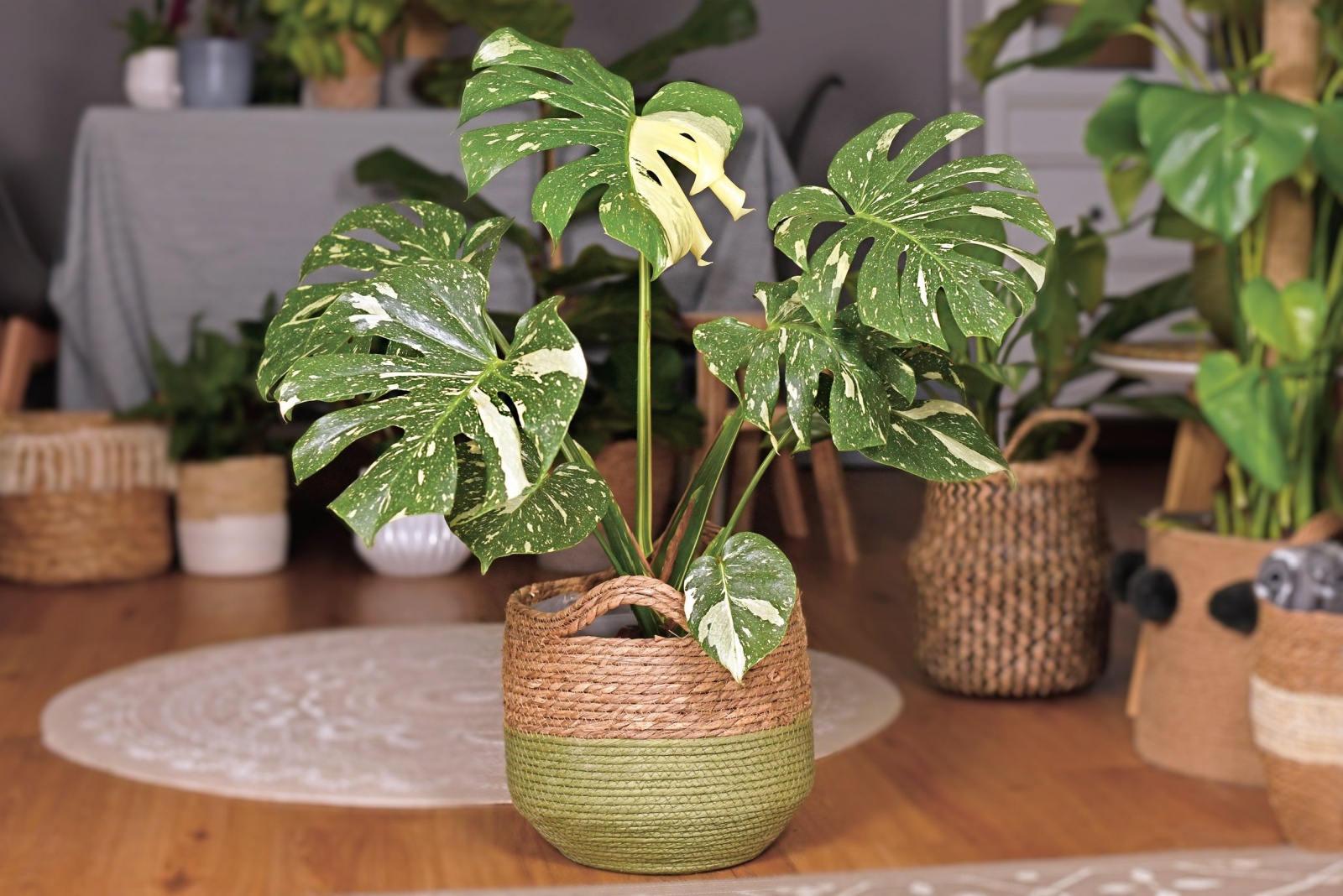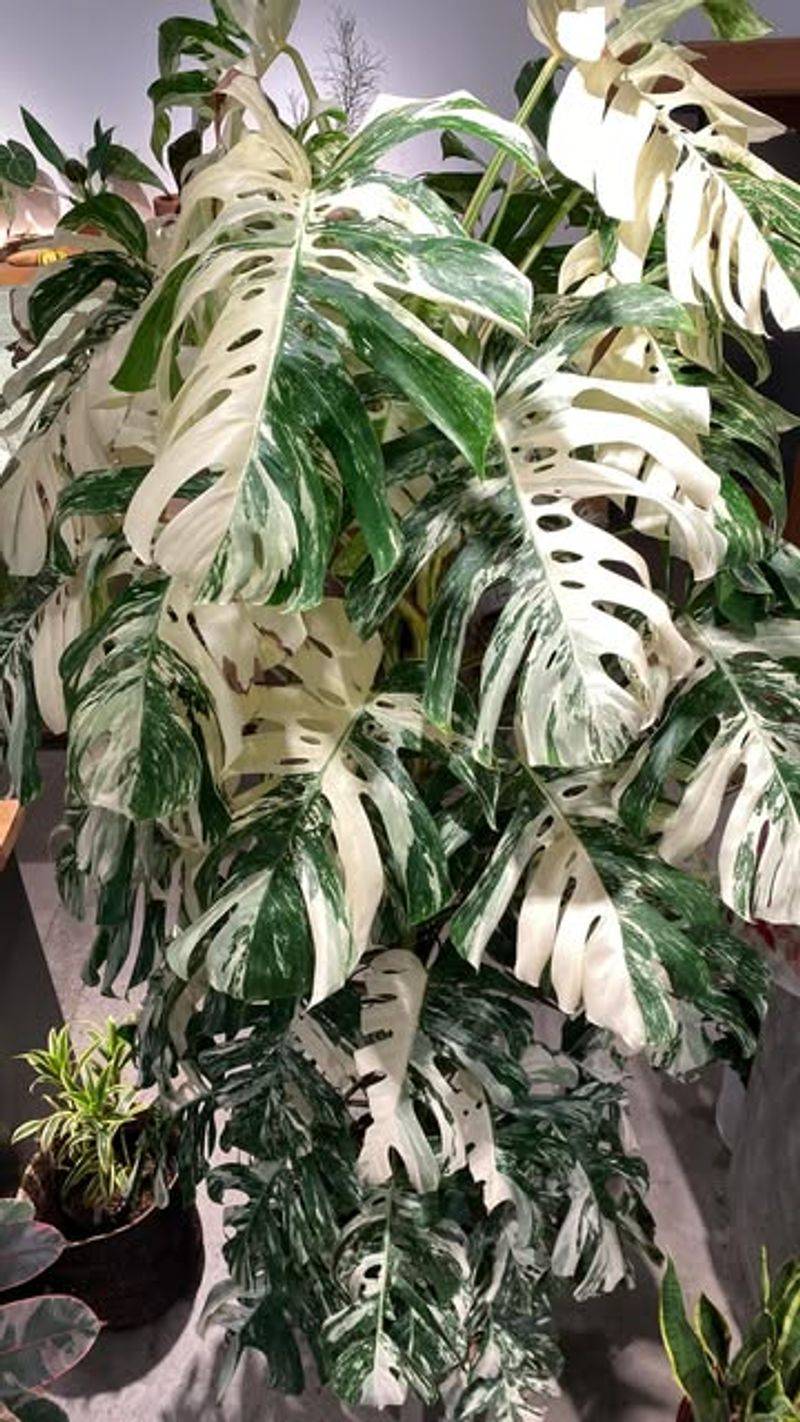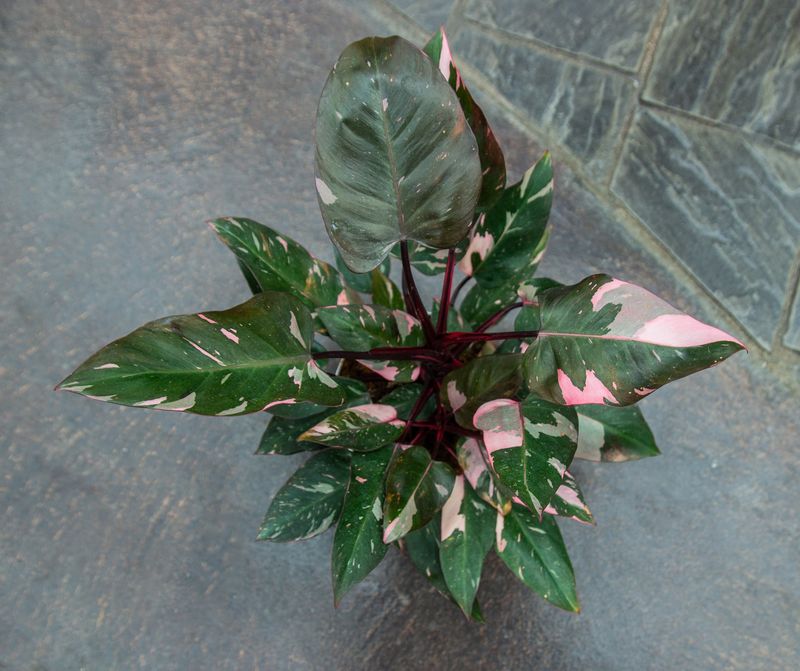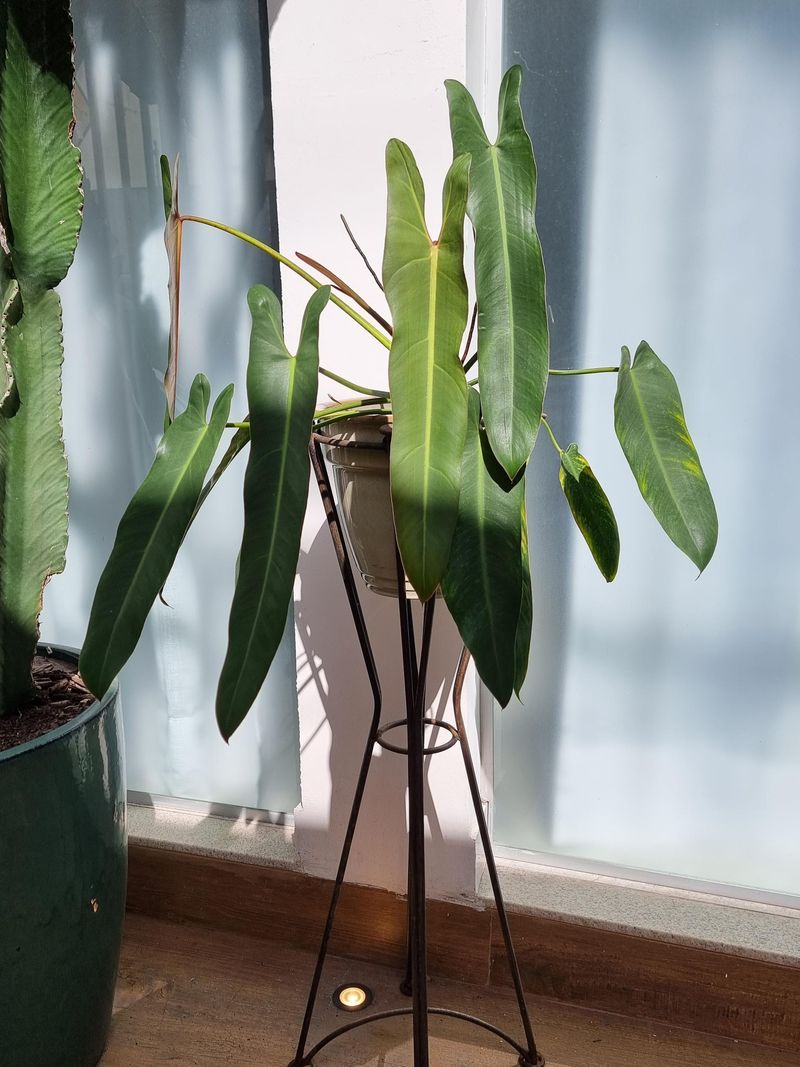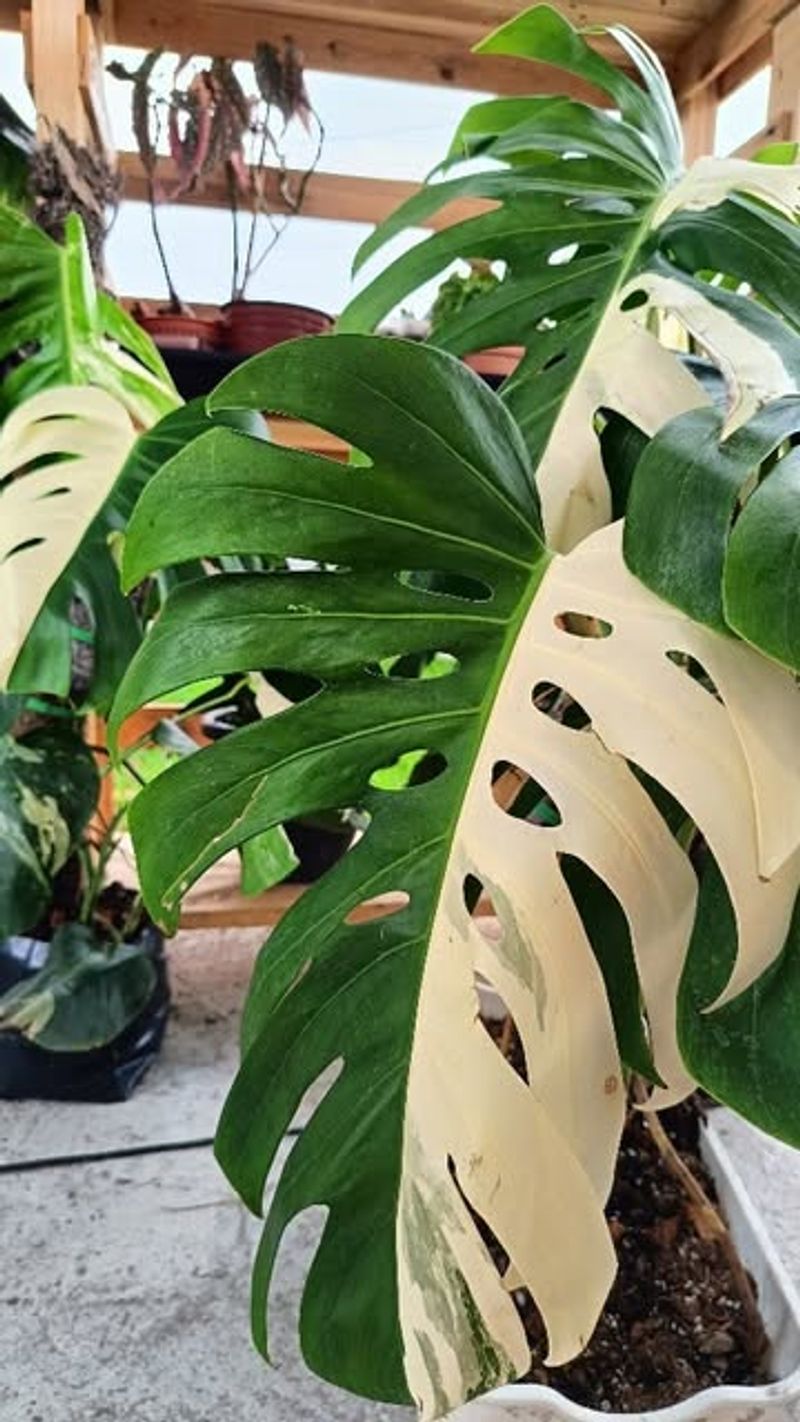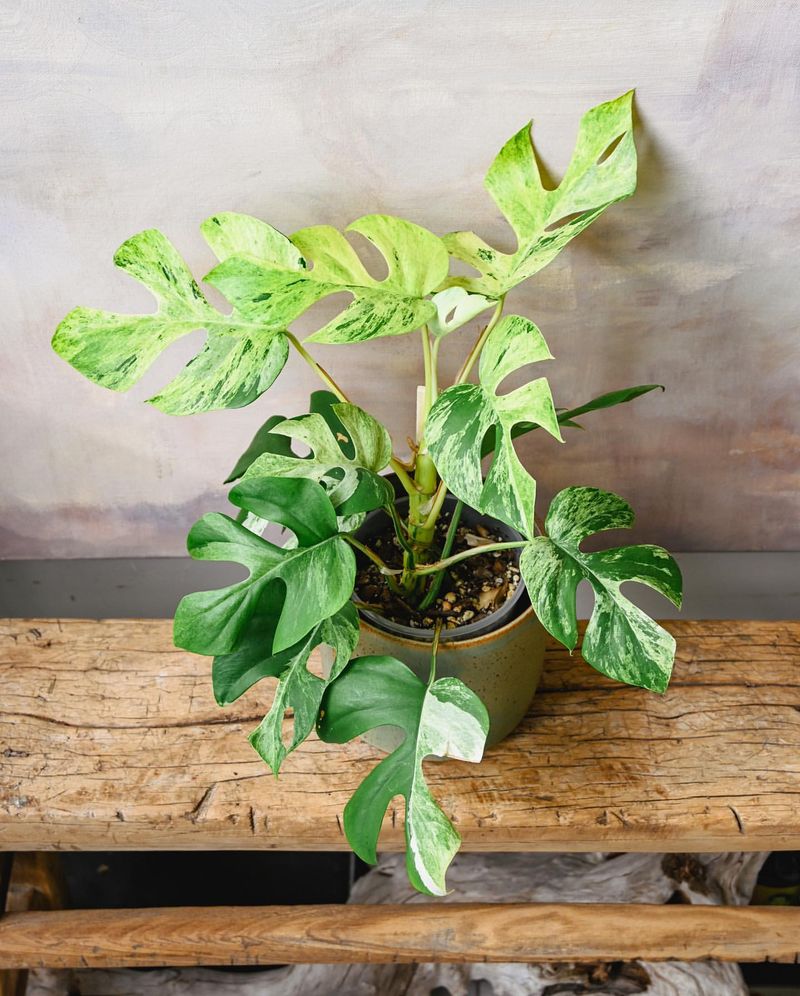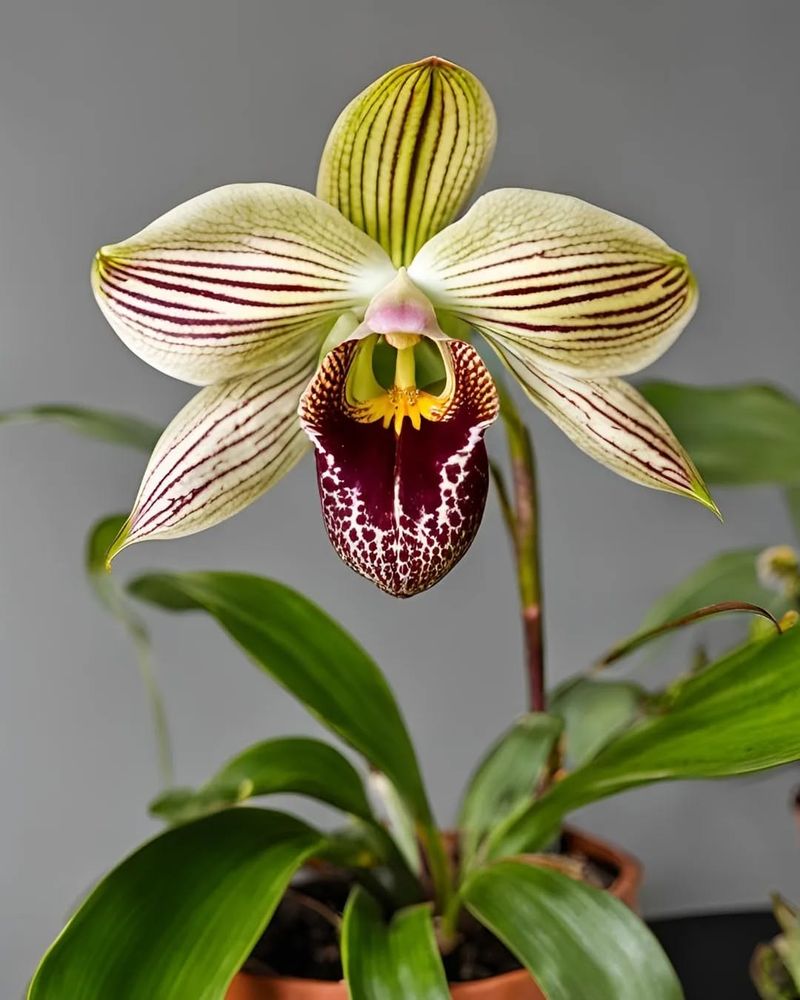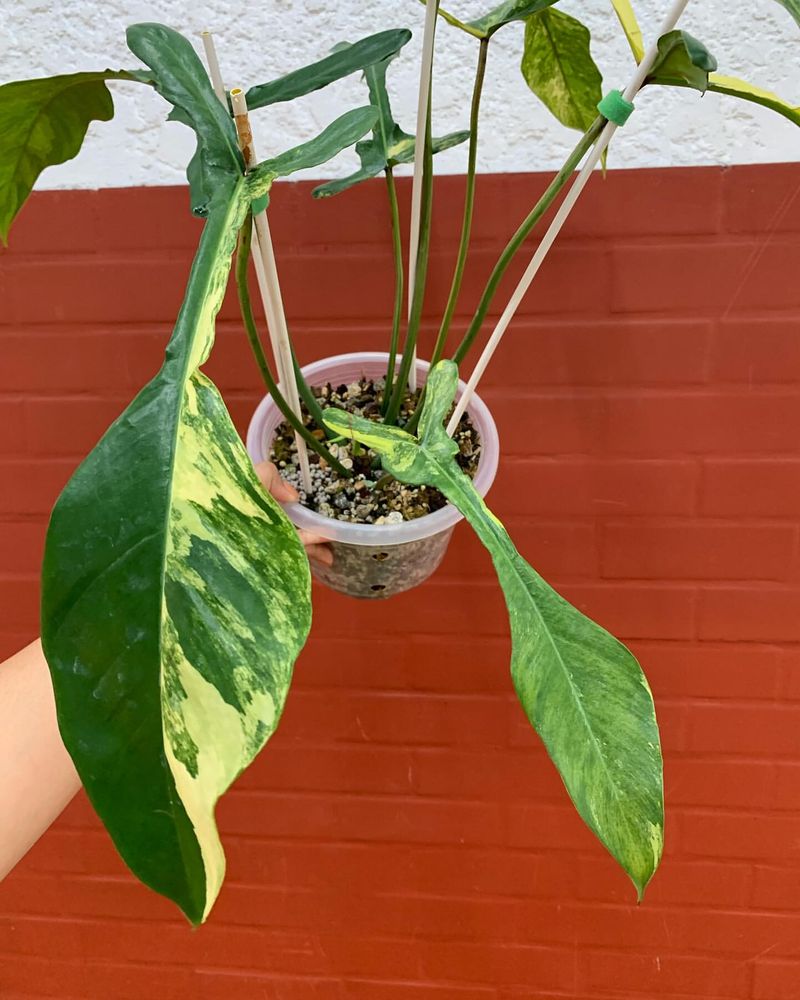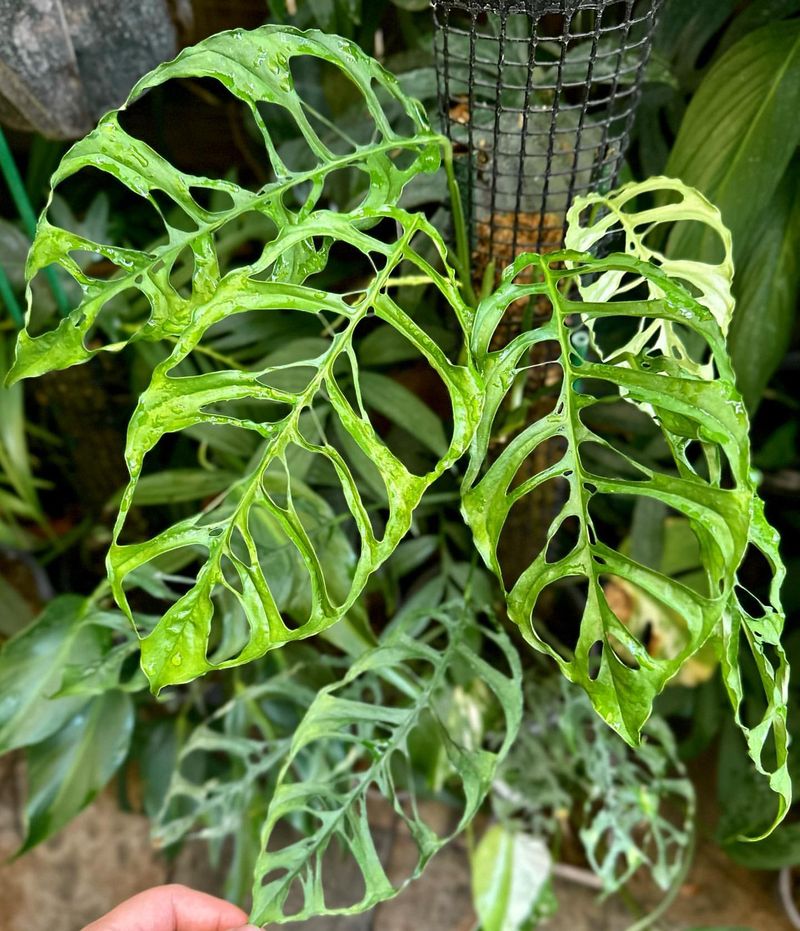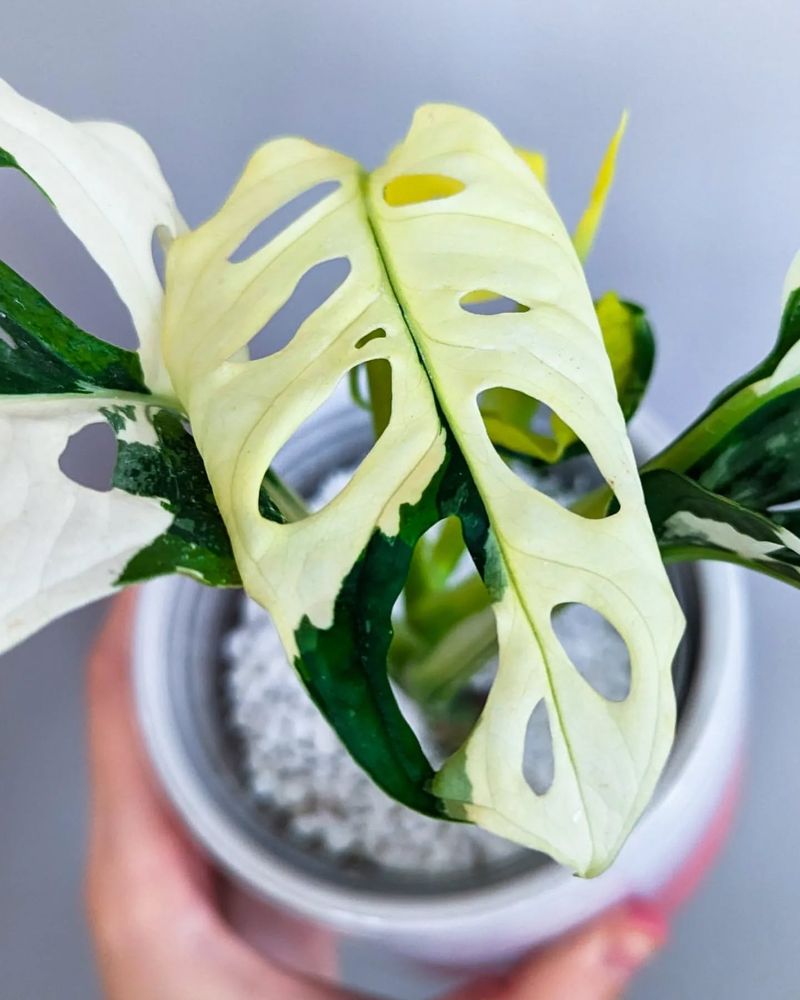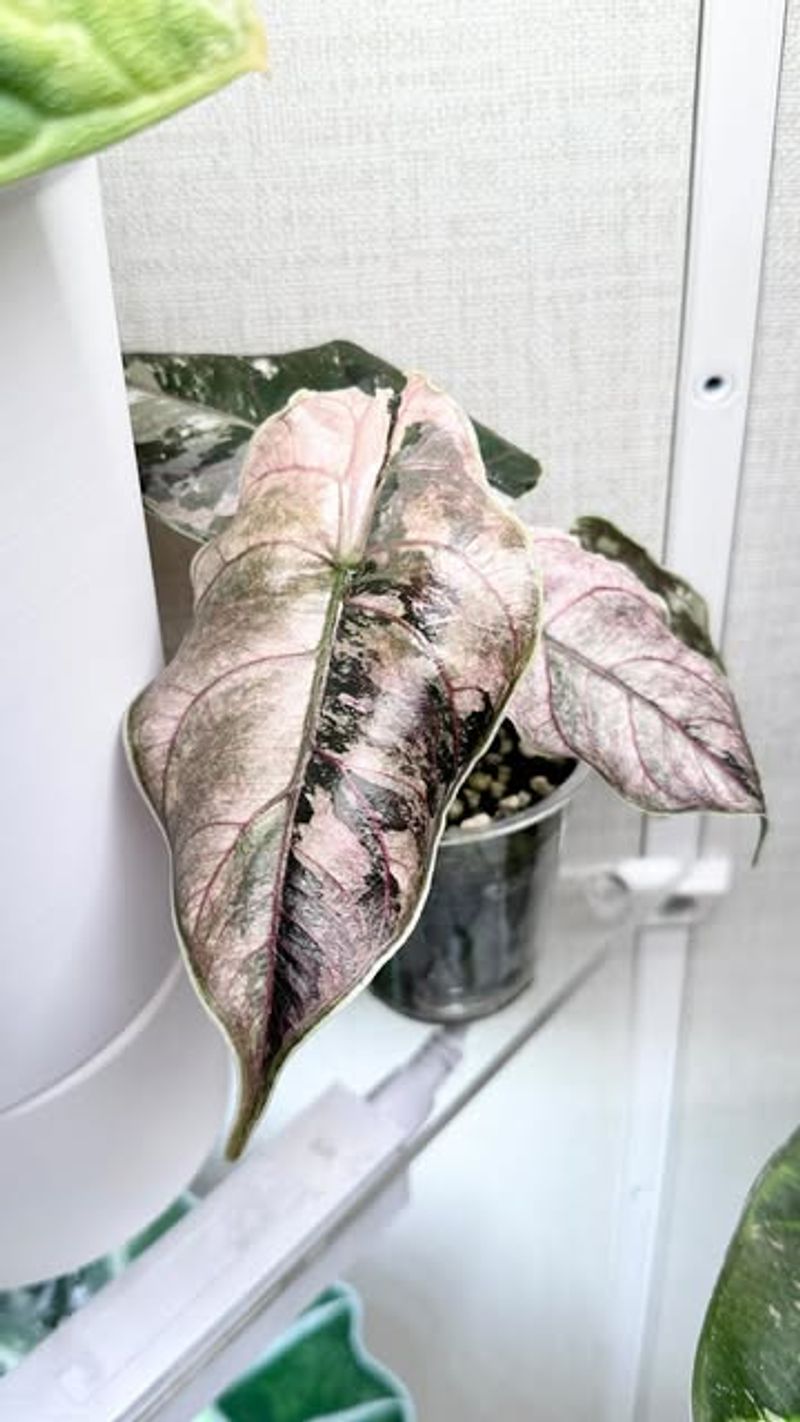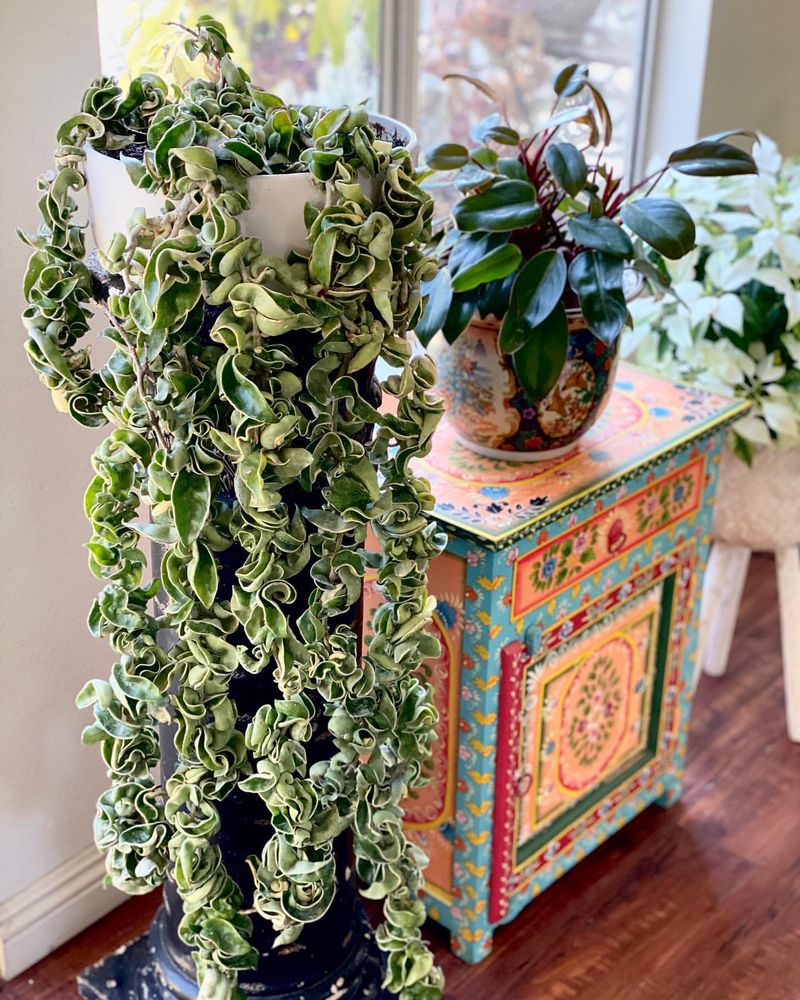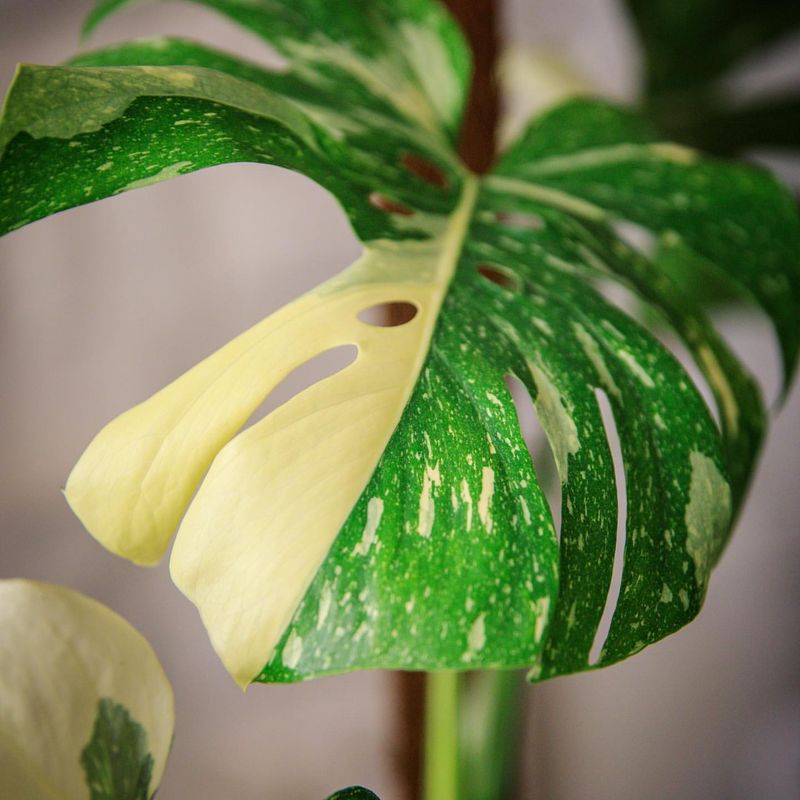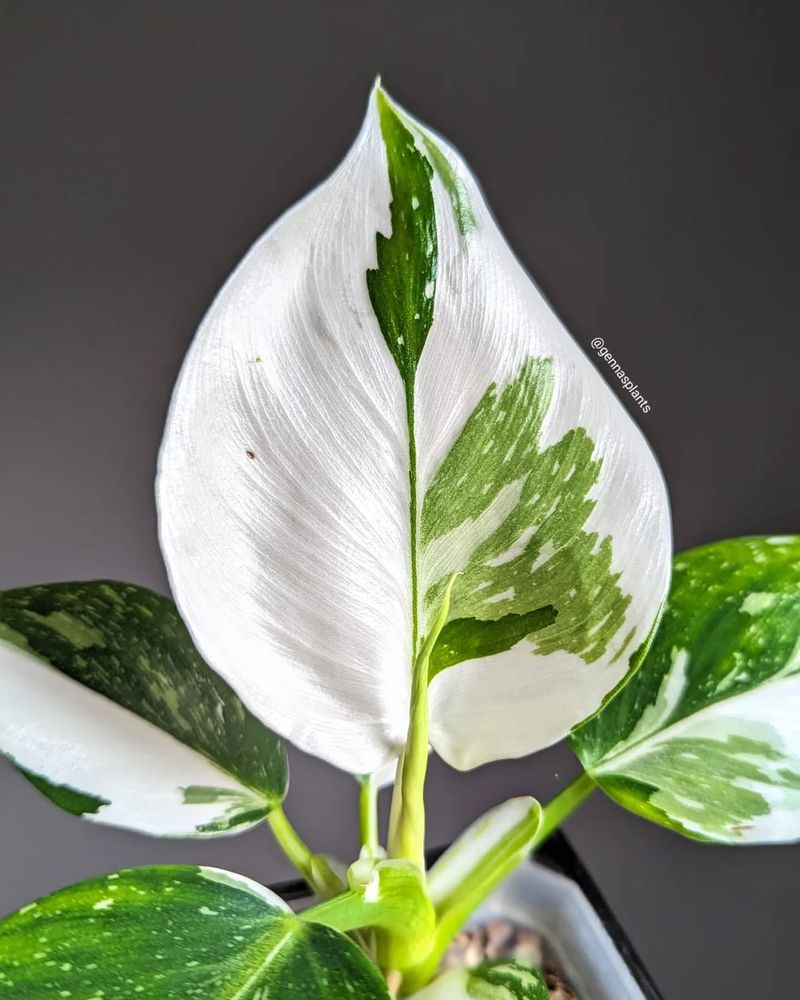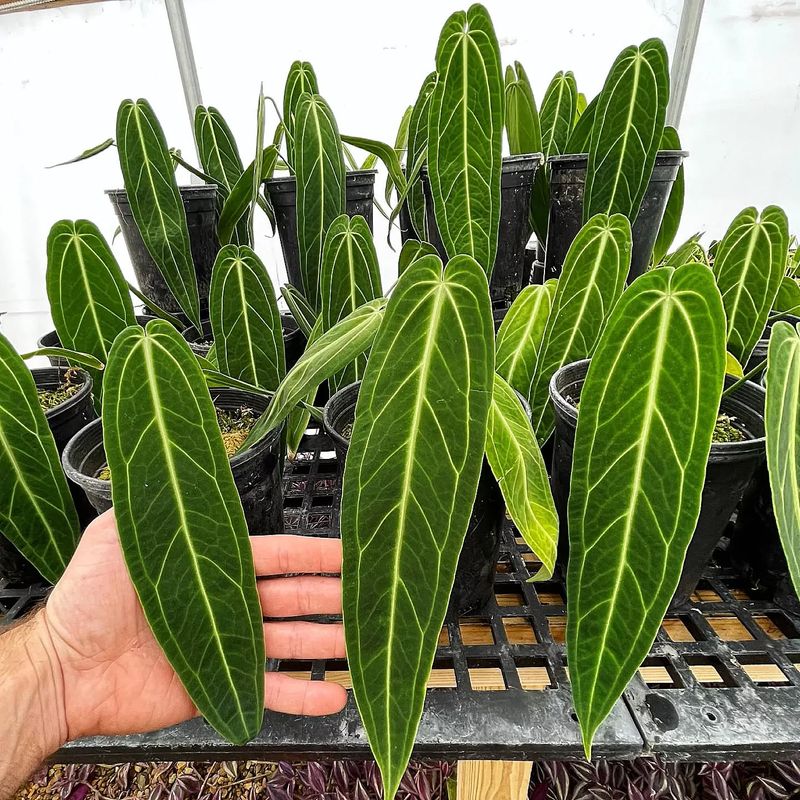Plant collecting has become a serious hobby across the US, with enthusiasts willing to pay thousands for the right specimen. The rarest varieties command prices that might shock even seasoned collectors, turning ordinary homes into showcases for botanical treasures worth more than some cars.
The hunt for these leafy status symbols has created a thriving marketplace where variegated leaves and unusual growth patterns can turn a simple houseplant into an investment. For me, finding a rare Philodendron at a local nursery last year felt like discovering buried treasure in my own neighborhood.
While some of these plants originate in distant rainforests, determined American collectors have created demand that brings even the most exotic specimens to our shores. The plants on this list represent the pinnacle of horticultural desire – rare, beautiful, and sometimes surprisingly difficult to keep alive.
1. Variegated Monstera Deliciosa
A single leaf cutting can fetch up to $5,000 when the white variegation is particularly striking. The rarity comes from a genetic mutation that can’t be reliably produced, making each plant unique.
Growing these temperamental beauties requires careful attention to indirect light. Too much sun burns the white portions, while too little causes the plant to lose its prized variegation.
Florida nurseries occasionally stock them, though most US collectors find them through specialty online retailers or plant swaps where serious enthusiasts gather.
2. Pink Princess Philodendron
The stunning pink and dark green leaves create a dramatic contrast that captivates collectors. When these first hit the American market around 2019, prices soared to $1,000 for small plants.
Unlike some expensive plants, these can be tissue cultured, which has helped bring prices down somewhat. Still, specimens with exceptional coloration command premium prices at specialty nurseries.
California and Florida growers lead US production, though the plants remain challenging to find with good variegation. The pink color results from a genetic mutation affecting chlorophyll production.
3. Spiritus Sancti Philodendron
Often called the Holy Grail of philodendrons, this endangered Brazilian native sells for $10,000 or more. Its sword-shaped leaves grow upright before dramatically cascading downward as the plant matures.
Found naturally only in a small region of Brazil, conservation efforts have made it slightly more available to collectors. The US Botanical Garden in Washington DC occasionally displays one, though private ownership remains extraordinarily rare.
Caring for this investment requires mimicking its native rainforest conditions with high humidity and filtered light. Even experienced collectors consider this plant a serious commitment.
4. Half-Moon Variegated Monstera
The perfect half-white, half-green leaf pattern makes this variety especially coveted. When the variegation creates a clean split down the middle of each leaf, collectors will pay upwards of $4,000.
Maintaining the exact half-moon pattern requires precision care. The plant constantly tries to revert to either more green (for survival) or more white (continuing the mutation), making perfect specimens incredibly rare.
American plant shops in urban centers occasionally receive small shipments that sell out within hours. Social media has fueled demand, with Instagram-worthy plants commanding the highest prices.
5. Variegated Philodendron Minima
Small but mighty in value, these compact plants feature splashes of white or yellow on heart-shaped leaves. The limited availability drives prices up to $1,800 for well-established specimens with stable variegation.
Growing no larger than two feet tall, they’re perfect for apartment dwellers with champagne plant tastes. The small size hasn’t kept prices down, though, as the variegation pattern is particularly striking against the deep green base color.
New York and Los Angeles plant boutiques occasionally carry these gems. Many US collectors join waiting lists that can stretch for months before a plant becomes available.
6. Gold of Kinabalu Orchid
With fewer than 50 plants remaining in the wild, this orchid commands prices up to $6,000. The striking green petals feature red spots, while the central lip displays a vibrant gold color that gives the plant its name.
Native to Mount Kinabalu in Malaysia, these orchids are nearly impossible to legally obtain. A few botanical gardens in the US have specimens, and very rarely they appear at specialized orchid auctions.
Conservation efforts focus on seed propagation to save the species from extinction. The orchid’s beauty and rarity have made it a symbol of the challenges facing wild plant populations worldwide.
7. Shiny-Leaf Yellow Aroid
Glowing with an almost metallic yellow sheen, this Philodendron joepii can sell for over $8,000. The unusual three-lobed leaves look almost like they were designed rather than naturally evolved.
First discovered in 2001, these plants remain extremely rare in cultivation. American collectors often import them directly from specialized European growers who have perfected their propagation.
Caring for these plants requires careful attention to humidity levels. The glossy leaves lose their shine when conditions aren’t perfect, diminishing both the plant’s beauty and its resale value.
8. Monstera Obliqua
Often confused with the more common Monstera adansonii, true Obliqua specimens have leaves that are more hole than leaf. The paper-thin foliage can sell for $3,000 for a small cutting with a single leaf.
Growing this delicate plant successfully is considered a mark of true horticultural skill. The thin leaf tissue requires perfect humidity and air circulation to prevent rot while still providing enough moisture.
Most plants sold as Obliqua in the US are actually misidentified Adansonii. Botanical gardens occasionally display genuine specimens, though private ownership remains limited to serious collectors.
9. Variegated Monstera Adansonii
The Swiss cheese plant gets a luxury upgrade with patches of white variegation that can push prices to $2,500. Unlike its cousin the Obliqua, this plant is sturdier while still featuring the distinctive hole-filled leaves.
Finding stable variegation patterns is challenging, as these plants frequently revert to all-green growth. Smart collectors in the US often buy cuttings rather than full plants to test the variegation stability before investing fully.
Chicago and Miami have become hotspots for finding these plants, with specialized nurseries hosting waiting lists for new shipments. Social media has dramatically increased demand for these photogenic specimens.
10. Alocasia Azlanii
The mirrored surface of these leaves reflects light with an almost metallic purple-red sheen. Also known as Red Mambo or Jewel Alocasia, small plants start around $1,200 and increase with size.
Native to Borneo, these tropical beauties require greenhouse-like conditions to thrive. The dramatic coloration intensifies with proper care, making successful specimens both rare and highly sought after.
Florida nurseries have had the most success cultivating these plants in the US. Their demanding nature means many die in the care of inexperienced collectors, keeping the supply limited despite tissue culture efforts.
11. Hoya Carnosa Compacta Variegata
The Hindu Rope Plant’s twisted, curly leaves become even more valuable when variegated with cream or pink. Well-established plants can fetch $1,500, especially when showing the rare tricolor pattern.
Growth happens at a glacial pace, meaning large specimens represent years of careful cultivation. The slow growth combined with the difficulty of maintaining consistent variegation keeps these plants perpetually in demand.
West Coast collectors particularly prize these plants for their drought tolerance and striking appearance. When flowering, they produce clusters of star-shaped blooms with a sweet fragrance that perfumes an entire room.
12. Monstera Thai Constellation
Laboratory-created through tissue culture, these plants feature stable cream variegation that resembles a starry night sky. Unlike some variegated plants, the pattern is genetically stable, yet prices still reach $700 for small specimens.
Costa Farms announced mass production in 2020 but faced delays, keeping prices high. The splashy variegation pattern makes these plants particularly photogenic, driving demand through social media exposure.
Home Depot occasionally receives limited shipments that create shopping frenzies. The stable variegation makes these somewhat easier to care for than other variegated Monsteras, as they don’t revert to solid green as easily.
13. Philodendron White Knight
Dramatic contrast between deep green leaves and pure white variegation makes this plant a collector’s dream at around $800. The climbing growth habit creates an impressive display as the plant matures and develops larger leaves.
Maintaining the perfect balance of light is crucial. Too little, and new growth emerges solid green; too much, and the white portions burn easily.
American collectors often find these through online plant communities where cuttings are traded or sold. The plant’s relatively straightforward care requirements (compared to other rare varieties) have helped maintain its popularity even as new rarities emerge.
14. Anthurium Warocqueanum
Known as the Queen Anthurium, these plants feature velvety, elongated leaves that can grow up to 3 feet long. The deeply veined, dark green foliage creates a dramatic statement that justifies the $1,000+ price tag.
Native to Colombian cloud forests, these plants require high humidity and careful watering. The velvet-like texture of the leaves comes from microscopic papillae that give the surface a suede-like appearance.
Atlanta and Seattle have become unexpected hubs for rare anthurium collectors in the US. The dramatic appearance makes these plants popular with interior designers creating luxury spaces for wealthy clients.

